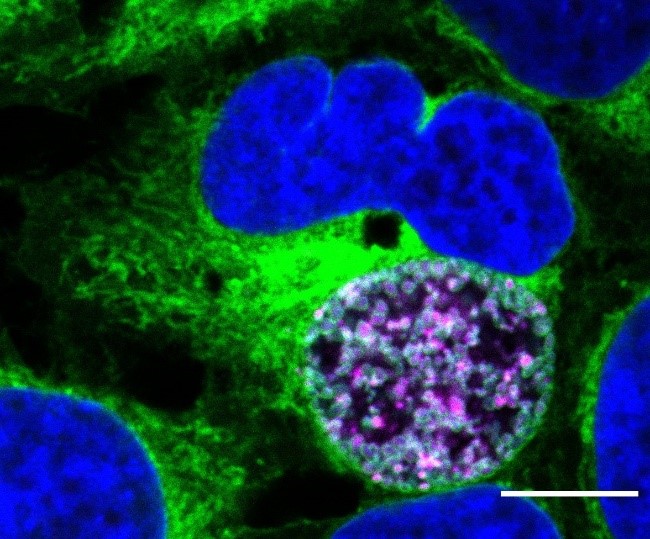The role of sphingolipids in Chlamydia infection
Sphingolipids are a major class of eukaryotic lipids and serve as structural components of cellular membranes as well as second messengers in various signaling cascades involved in cellular processes like apoptosis, inflammation, or autophagy. Previous work has shown that host sphingolipids, like ceramide and sphingomyelin, are required for intracellular growth of C. trachomatis and maintenance of inclusion stability. The chlamydial uptake of ceramide takes place at Endoplasmic Reticulum-Chlamydia inclusion membrane contact sides. Additionally, the Golgi apparatus serves as a major source for sphingolipids. Sphingolipids not only provide stability of the inclusion membrane, but also constitute signaling hubs for host-pathogen interactions.
As part of the Research Training Group GRK2581 we investigate the intracellular trafficking pathways of sphingolipids to the C. trachomatis inclusion using functionalized lipids. Furthermore, we aim to understand the role of sphingolipids in C. trachomatis infected neutrophils during subversion of host cell autonomous defense, especially in apoptosis and autophagy pathways.








